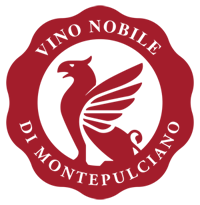CLIMATE CONDITIONS
The year began with a fairly cold winter with low temperatures, constant rain and more or less heavy snowfall, allowing the soil to store plenty of water.
During March the temperatures were within average, ensuring that budbreak took place promptly in early April, as is usual for sangiovese grapes. A sudden and abnormal rise in the temperature (as high as 30°C) in the first ten days of April, along with well-irrigated soil, accelerated the development and growth of the buds. Overall, the flowering and subsequent fruit-setting phases took place within a short time, towards the end of May: this applied to most of the varieties grown.
Around the 20th June the temperature rose to “summer” levels, despite occasional rain in late June and early July. The rain averted the early signs of lack of water in some vineyards. The vines continued their development cycle fairly steadily: veraison took place slightly early and was fully complete for some grapes by mid-July. Also in mid-July the temperature fell to below the seasonal average (minimum 12-15°C and maximum 20-25°C) and the sky was often cloudy, with about 60mm of rain recorded several times in late July.
Conditions were excellent in the vineyards until mid-August, with sparse, good-sized bunches and healthy, active foliage, but changed very rapidly from 20th August onwards: maximum temperatures of around 33-34°C with peaks at 38-39°C created a number of difficulties for vegetation development until early September when greater temperature variation with more “normal” temperature levels eased the stress on the plants during the previous weeks, allowing them to continue developing normally towards maturation. High temperatures and plenty of sunlight caused scorching on the leaves and some of the grapes, especially those facing south-west. This made it necessary to monitor maturation carefully and constantly through basic technical parameters as well as the irrigation level of the vineyards in order to identify the perfect time to harvest in the individual plots.
Summary of phenological stages
Budding: first week of April
Flowering: late May
Veraison (start): mid-July
Veraison (end): mid-August
The Wines of 2011
Although many of the vineyards are east and north-east facing, and the depth of the soil guarantees a good, adaptable response to hot, dry weather in this area, it proved necessary to carry out further, strict selection of the grapes in the cellar and carefully monitor maceration in order to obtain clean wines free of heat-related flaws. The wines produced therefore have a high alcohol content, with medium-low acidity and slightly higher pH. Thanks to special care the wines are high in quality with good intense colour, fairly smooth tannins and nicely developed varietal aromas, although their ageing potential seems to be limited.
The large amount of vineyards with eastern and north-eastern exposures, combined with the depth of the terrains, helped to produce a great result from a hot and dry vintage, once again demonstrating the versatility of the area. However, to obtain clean wines without any of the defects that sometimes affect such a vintage, the grapes had to be rigorously and carefully selected, and the maceration process had to be undertaken with great care. The resulting wines have an elevated alcohol level and medium-low acidity, accompanied by slightly elevated pH levels. When racking, the wines were found to be of a high quality level, with good colorant intensities, quite soft tannins and pleasant aromas. Today, the 2011 wines are quite fresh, with prevalent ripe fruit aromas; in the mouth they present sometimes sharp tannins, almost as if to compensate for the average acidity that characterises the vintage, guaranteeing that this is a long-ageing vintage. In conclusion, the vintage can be considered of a high qualitative profile, particularly regarding structure, colorant intensities and the presence of complex aromas.


